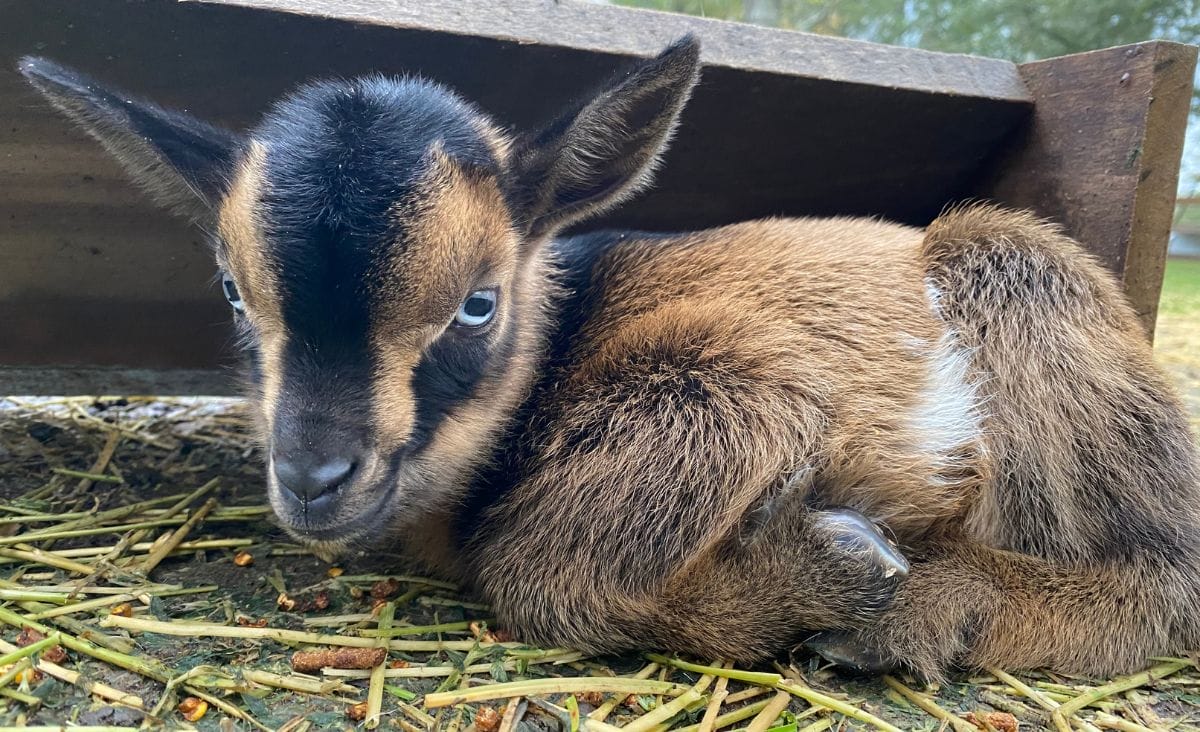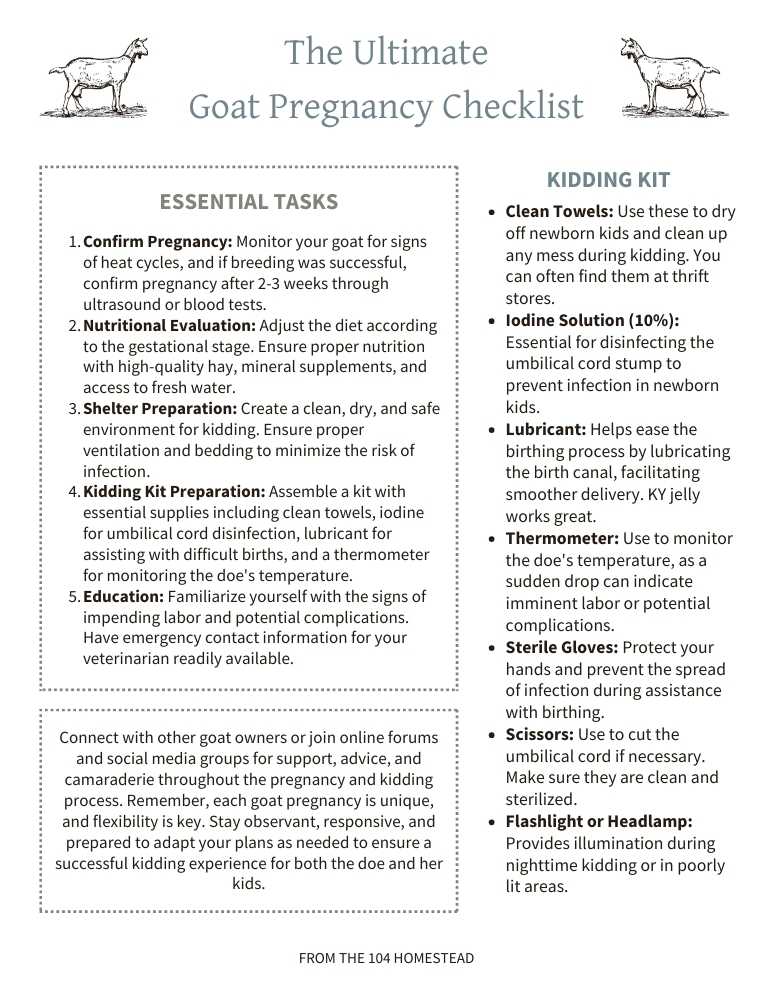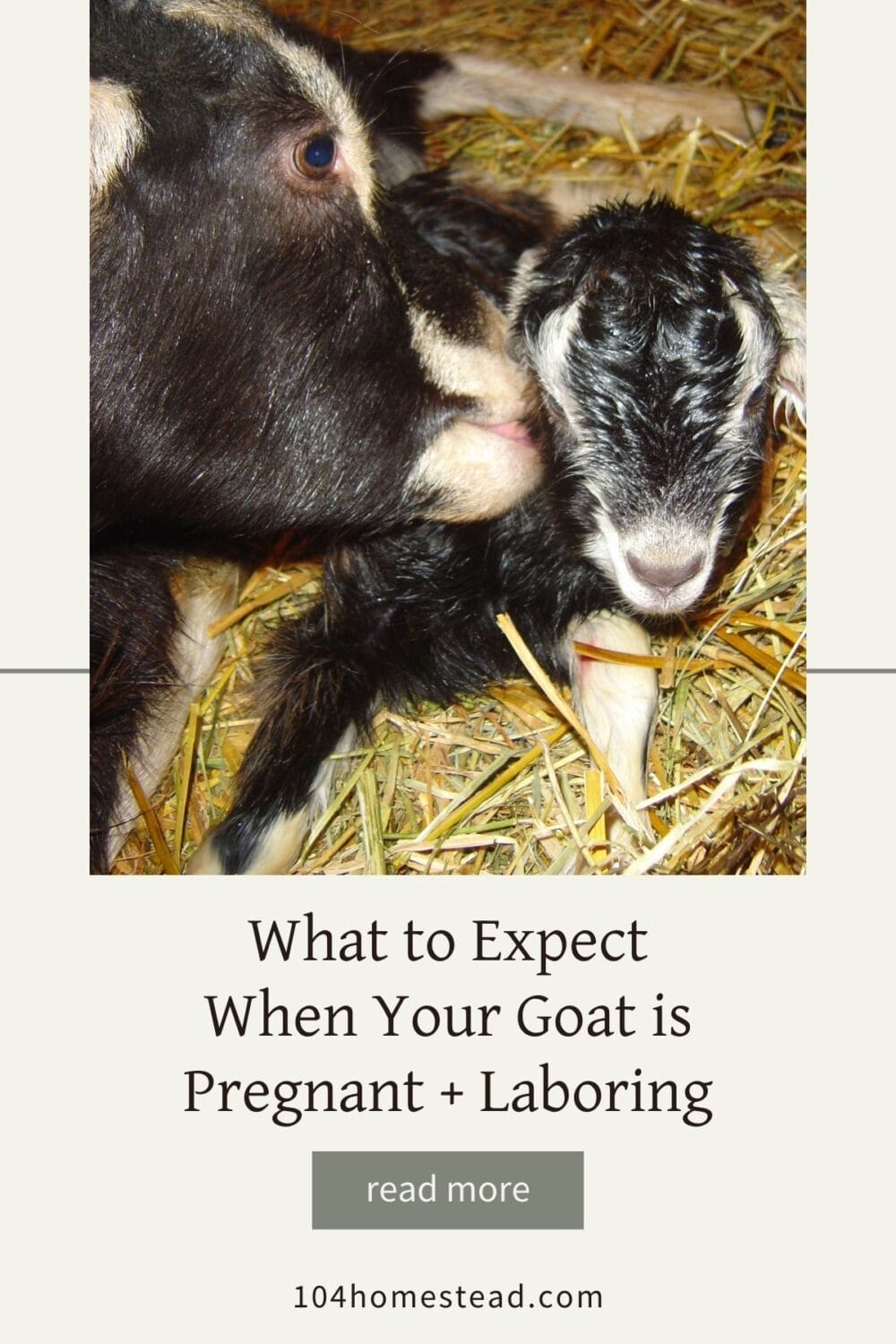What to Expect When Your Goat is Pregnant and Laboring
Learn how to take care of goats during late pregnancy, how to tell when they are in labor, and how to make sure that everyone is cared for.

Hello, and welcome back to my post about how goats are bred. Part Two talks about the important parts of late pregnancy, labor signs, and taking care of your goats after giving birth. This post is meant to teach you how to help your does during pregnancy, labor, and beyond, making sure the health and safety of both moms and their babies.
If this is your first time going through the process of breeding and kidding with your goats, this guide will take you from start to finish. Be sure to check out our new calculator in Part One, which will calculate your Nigerian dwarf’s kidding date. Part One also covers getting your goat bred and how to care for your newly pregnant goat.
Late Gestation Care
About six weeks prior to kidding, if you vaccinate your herd, you’ll want to give your doe a CD&T shot. This is a vaccination for Clostridium perfringens (types C and D) and tetanus. Giving it to your doe at this stage passes on immunity to her kids. We do not do this with our herd, but many do. That’s totally your call.
Kids are starting to grow fast, and your doe is going to need more nutrition to sustain herself and her babies. Five weeks prior to kidding, slowly begin to add grain rations to your doe’s diet.
Two weeks prior to kidding, you’ll want to use clippers to trim up your goat’s vaginal area and udder. Having the hair clipped around the vagina keeps the area cleaner, and having the udder cleaned up makes it easier for the kids to access the teats. Some does don’t need an udder trim, but we have one that resembles a Wookie under there, and I even have trouble locating her teats in all that hair.
This is also the time to get your kidding kit in order. Although we prefer to let things happen naturally, intervening only when absolutely necessary, we plan for the worst-case scenario. Oak Hill Homestead has an excellent article about what to have in your kit and why you might need it.

Signs of Labor
Much like with a standing heat, your doe may show one, some, or all of these. Many won’t show a single one of these signs of labor. One minute, she’ll be hanging out with everyone, doing her goat thing. The next thing you know, there are babies under her, nursing. If you haven’t read the Doe Code of Honor, I highly suggest it.
A Few Weeks Before Labor
- The udder will begin to fill during the last few weeks of pregnancy. As time approaches, her udder will become firm.
- Her hips may begin to appear sunken as the kids drop.
A Few Days Before Labor
- Her tail ligaments will loosen. This is really hard to identify, so don’t count on being able to tell.
- If you can still feel the kids moving inside the doe, you have about 12 hours to wait. Movement becomes almost nonexistent as they get into position for birth.
- She may become restless. You might see her getting up and down, moving, and pawing.
- Her teats should fill about 24 hours prior to kidding.
A Few Hours Before Labor
- She may look at you and lick your hands and plead with her eyes for you to be with her, even if she usually just tolerates your existence.
- You’ll see a mucus stringy discharge. It is a natural lubricant for the labor process. A long, milky string is a sure sign that the time is fast approaching.
- Within hours of kidding, if you pull gently down on your doe’s eyelid, it will be bloodshot.
- She may refuse to eat or just nibble when she normally has a good appetite.
Labor is Approaching
- You may see her looking back, sideways, and talking. She will put her head on her flank as she talks to her kids.
- She may stare off into space for 30 – 60 seconds. These are early contractions.
- She may breathe heavily and look worried. This is the beginning stage of labor.
- She will lie down and vocalize as her tail rises and falls. This is the beginning of heavy labor.
- Her water will break. The time has arrived.
After Labor
Most of the time, labor goes off without a hitch. Fias Co. Farm has a wonderful guide on assisting if labor isn’t happening smoothly on its own. Assuming everything goes well, mama and kids will need minimal aftercare. After that, it’s just a matter of sitting back and watching those beautiful babies explore the world.
It’s an amazing experience to be a part of. Enjoy every moment of it.
Frequently Asked Goat Labor Questions
After making sure the babies and their mothers are healthy, you may want to learn more about the different aspects of goat care and management. You can learn more about homesteading at every step, whether you are wondering how to milk a goat, trying to come up with the perfect name for your goat, or weighing the pros and cons of disbudding.
If you’ve found value in this blog post and enjoyed reading it, why not share it with your Pinterest community? Pin the image below and spread the love!

Being responsible for taking care of goats during late pregnancy, labor, and the time after birth is a rewarding job that needs planning and attention. By recognizing the signs of labor and giving the doe the care she needs right away after giving birth, you can help make sure the babies have a healthy start in life and the doe has a quick recovery. Do not stop learning, always be ready, and enjoy the amazing process of adding new goats to your herd.
What is the most important thing you have learned from helping goats give birth on your homestead? Share your experiences and tips to help fellow readers navigate the rewarding yet challenging process of goat kidding.

I Love it .. Thank you for all the information.